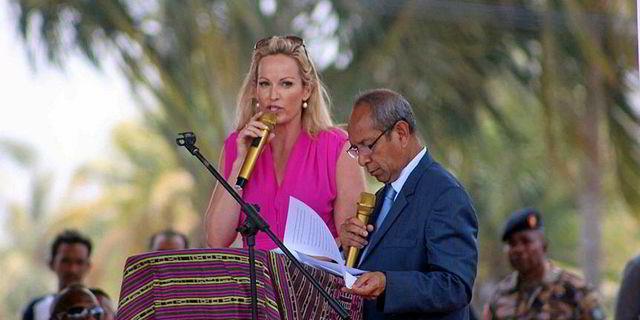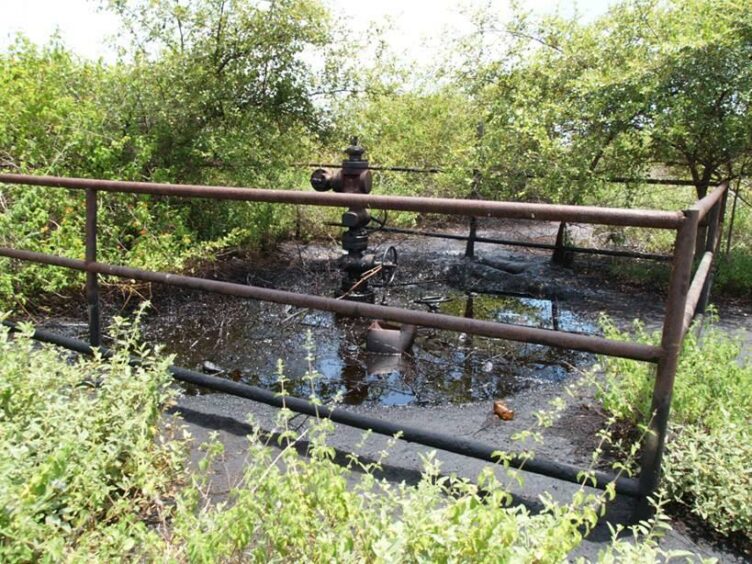
Plucky explorer Timor Resources has encountered “hydrocarbon shows of significance” while drilling its second well onshore East Timor as the company considers an initial public offering (IPO) to raise more funds in its quest to unlock the nation’s petroleum potential. Significantly, there are no firm figures for the hydrocarbon shows yet, but plenty of hope.
The latest news of an oil discovery has raised hopes of a potential oil bonanza in the nation that is highly dependent on waning oil and gas reserves for revenues. However, analysts caution that there is a long way to go before any commercial discovery is proven, if ever.
The privately-owned Australian oil and gas company last October spudded the first onshore well, Karau-1, in more than 50 years in the Southeast Asian nation, also known as Timor Leste, as part of a back-to-back exploration drilling campaign.
The second well, Kumbilli-1, was drilled in PSC TL-OT-17-08, also known as Block A.
However, it is too early to say if the oil discovery is commercial. “The pay zone is fractured, and the fracture analysis is critical to volumes being established. Third party technical experts are currently undertaking this scope of work. A full drill stem test will confirm. This is exciting for activity onshore Timor-Leste,” said Suellen Osborne, chief executive of Timor Resources.
“The FMI data is currently being interpreted, oil samples and reservoir samples have been flown to the laboratories in Australia. We will have a fixed idea of the volumes that we look forward to sharing with you when we have all the facts. A full DST suite of testing equipment is being shipped into Timor-Leste to do extended production tests so we can confirm the volume,” she told Energy Voice today.
“Logging shows extensive natural fracturing, an important production characteristic for a limestone and Triassic clastic reservoir of this type and one that could lead to an upgrade of the net pay estimate as the characteristics of the reservoir become better understood,” Timor Resources said in a statement.
“High down hole pressures encountered lends confidence to the reservoir being adequately charged to support oil recovery,” added the explorer.
The results of the first two wells drilled onshore East Timor, by contractor Eastern Drilling and subcontractor Schlumberger, are very encouraging, said the company, which is committed to unlocking the country’s onshore resource potential.
Timor Resources’ strategy is to advance field development of its large onshore oil acreage in East Timor through additional exploration wells, production wells, as well as oil storage and export infrastructure. To achieve its goals the company intends to partner with strategic financial investors to raise additional capital. Timor Resources also said it is currently implementing a systematic process to access this additional capital. This may result in an IPO of the company in due course.
Timor Resources has a large inventory of exploration prospects. Prior to initial drilling Timor Resources said it had seven seismic defined prospects, with a P50 of 520 million barrels, in its inventory.
Mark Moszkowski, an industry expert, who has worked in East Timor and studied its petroleum sector for over a decade, remains skeptical. “Half a billion barrels, seriously? One and a half times the oil at Bayu Undan and more than twice that at Sunrise. At today’s price level, (worth) US$50 billion,” he told Energy Voice.
He added “it would have been very surprising if no oil had been discovered, since there has always been oil in the area, as evidenced by the existing wells and seeps.”
Following the drilling at Karau-1 and Kumbilli-1 the company said, “it will secure additional capital in order to undertake a drilling campaign focused on the five remaining highly prospective, seismic identified, drillable targets.”
Any significant oil discovery would provide a welcome windfall for East Timor, which has been heavily reliant on revenues from oil and gas. However, production from its sole producing field Bayu Undan is waning and operator Santos expects to shut down the field within a couple of years.
Recommended for you


 © Supplied by Mark Moszkowski, Dee
© Supplied by Mark Moszkowski, Dee